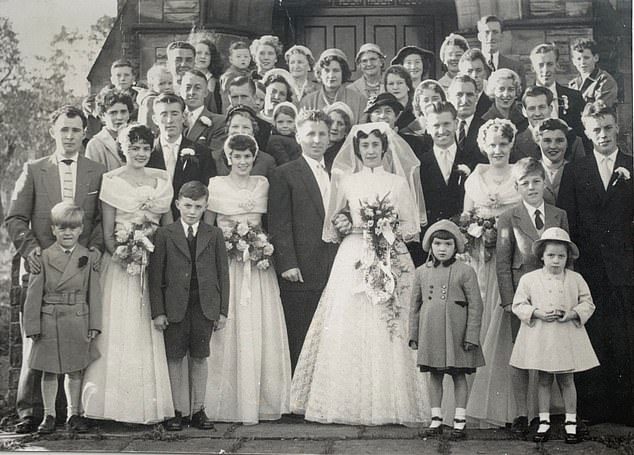A spinster working in a cafe could be the key figure in a police investigation into the mystery of a baby who may have been murdered more than a century ago.
The skeletal remains of a full-term baby were found, with a piece of string wrapped around its neck, hidden beneath the floorboards of a flat in Bishop Auckland, County Durham, by the homeowner carrying out renovation work in July.
The newspaper wrapping the body was dated 1910 and the twine suggested the baby, of unknown gender, may have been killed after birth.
Carbon dating analysis of the bones should confirm the year the baby died and detectives hope to obtain a DNA profile that can be matched to that of living relatives.
Meanwhile, police, hoping to solve the historical mystery, have been tracking down descendants of the people who lived in the flat at the time.
No one alive can identify her from a photograph, but the prime potential suspect, Mary Walker, is likely to be one of the older faces in a group wedding photo taken in 1957.
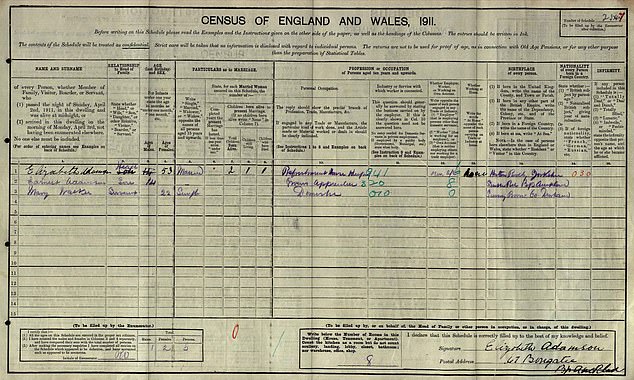
1911 Census of England and Wales, showing Mary Walker was aged 22, unmarried and the only woman of childbearing age living at the house in question, 67 Fore Bondgate.
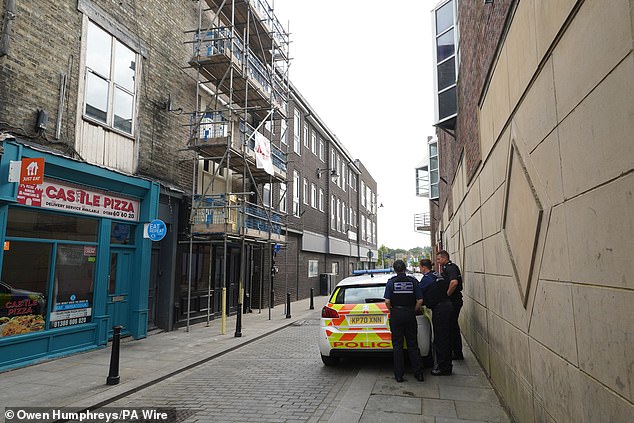
Police community support officers outside the building in Bishop Auckland in County Durham on July 31
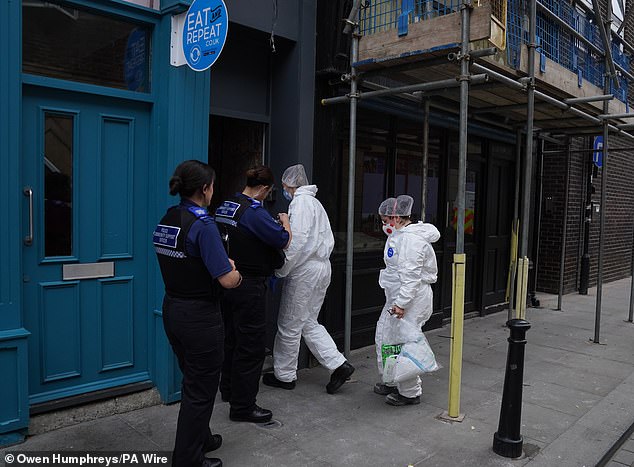
Police forensic investigators enter the disused building after contractors working on renovating a property found the skeleton of a baby beneath the floorboards on July 31.
The Mail has done so too, and given current events, Mary Jane Walker’s name stands out as a prime potential suspect.
Miss Walker was 22 years old, single and the only woman of childbearing age living in the house in question (67 Fore Bondgate) when the 1911 census was taken.
She was listed as a ‘domestic’ and ‘servant’ on the official document, along with Elizabeth Adamson, 53, a ‘married’ woman and owner of the ‘refreshment house’ and her 14-year-old son Ernest.
The accommodation was above a café and pastry shop that they ran.
Until science reveals some evidence, Miss Walker’s connection to this baby’s tragic death remains pure speculation.
But the most curious thing is that she continued living in the same small apartment where the baby was hidden and working in the café for more than half a century.
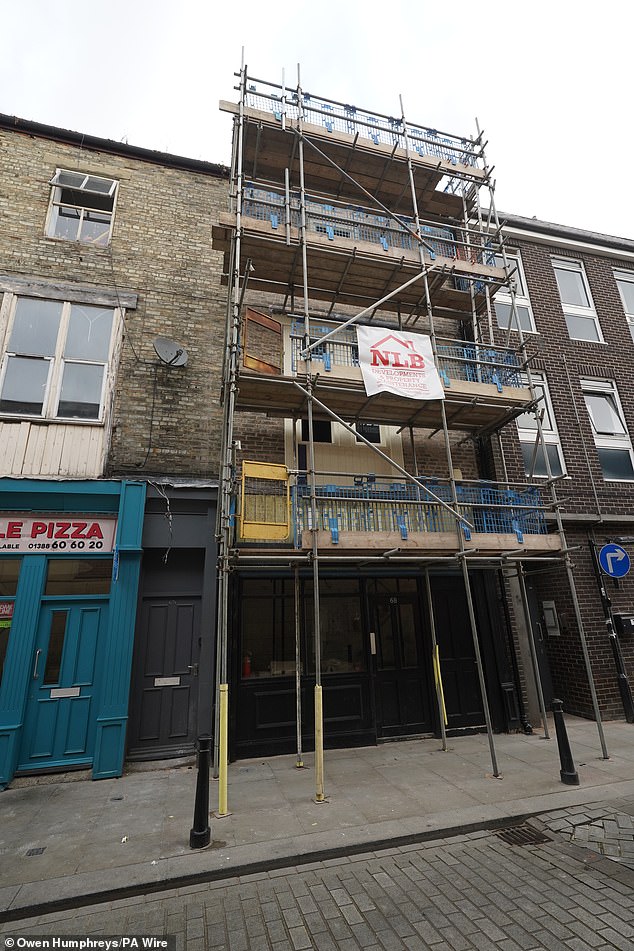
Scaffolding outside the disused building at Fore Bondgate in Bishop Auckland on July 31
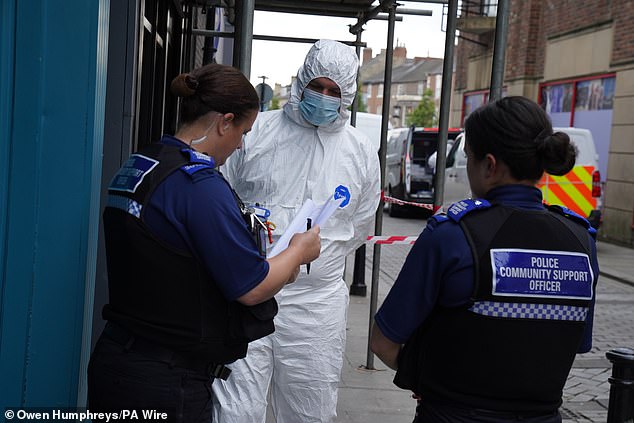
Police forensic investigators enter the disused building in Bishop Auckland on July 31
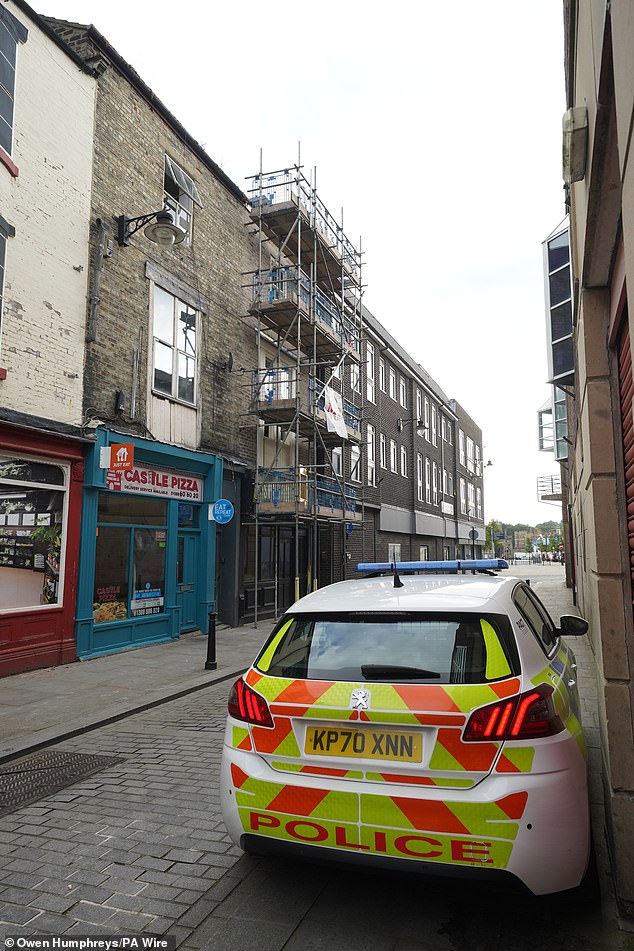
A police car parked outside the building in Bishop Auckland, County Durham, on July 31
The eldest of 13 children born to a local coal miner and his wife, a job in “service” with accommodation provided would have been a valuable option for a working-class girl.
At that time it was considered shameful and disgraceful for a single woman to become pregnant, so they were forced to hide their pregnancy.
Social historian Professor Pat Thane said: “People were only cared for if they had families who could afford to support them.”
She said tragic baby deaths like this were “all too common”, particularly among a “poor domestic worker who was desperate to maintain her income and a place to live”.
‘It was certainly the case that single mothers ended up giving birth on the floor somewhere, in despair because they did not know what to do, and then the child might die or, as seems likely in this case, be killed because they did not know what else to do with it.’
In 1921, Miss Walker was still there, but the café was owned by Robert Patterson and his wife Mary. By 1939, the widowed Mrs Patterson, aged 54, was living with her married daughter Hazel and Miss Walker was listed as the café’s cook.
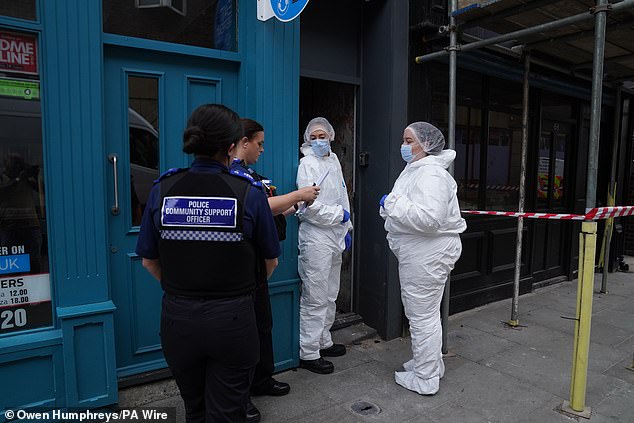
Police forensic investigators enter the disused building in Bishop Auckland on July 31
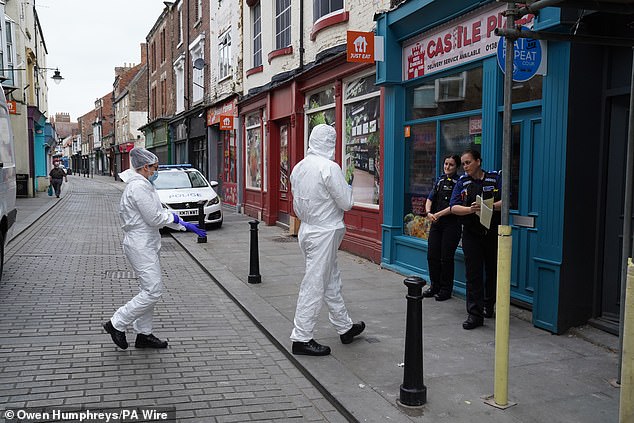
Police are continuing to investigate on July 31 after a baby skeleton was found on the property.
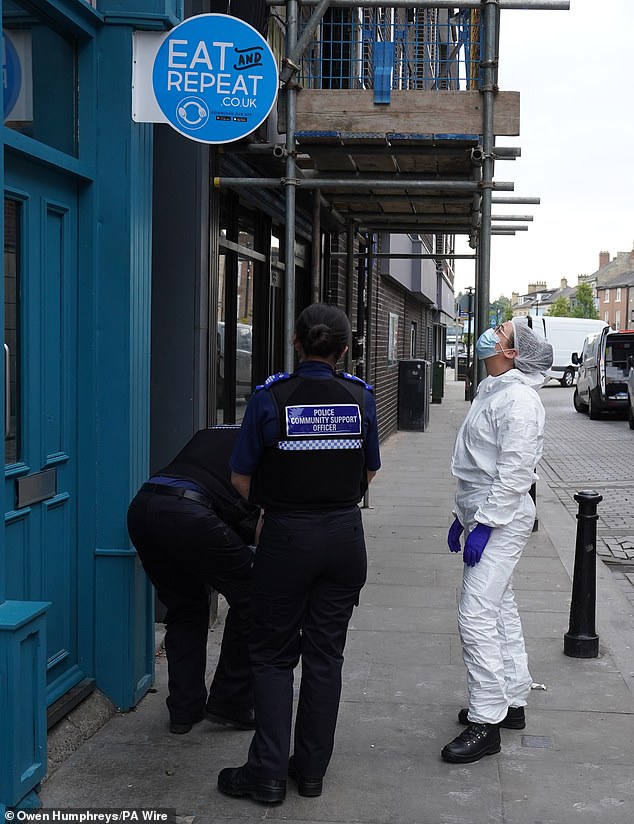
Police forensic investigators enter the disused building in Bishop Auckland on July 31
And so it remained for decades, with elderly Miss Walker helping the Pattersons run the business.
An older relative, who asked not to be identified, said her family knew her as “Aunt Jane.”
He recalled: “She lived above the bakery where she worked for many years and helped bake the products. She was quiet and shy, never married and did not go out, putting her sealed pay envelopes in a drawer so as not to spend them.”
He didn’t recall her having “boyfriends, just family.” He suspected that the only way she could have gotten pregnant was by meeting a married man who came into the store.
Miss Walker made her final will in 1966, when she was still living at 67 Fore Bondgate. As well as some family bequests and a generous donation to the local Pentecostal church, she also left her estate to Hazel.
He died in 1975, aged 86, with an estate valued at £12,666 after tax.
All of the family members who lived with her have died; if any dark secrets were shared, they were never divulged.
No one alive can identify her in a photograph, but Mary Walker is likely one of the elderly faces in a group wedding photo taken in 1957.
The event in question was the marriage at Bishop Auckland of her niece Margaret Louth to Joseph Gelson. Margaret was the daughter of Miss Walker’s sister Elizabeth, who was the closest in age to her of all the siblings and stood behind the bride.
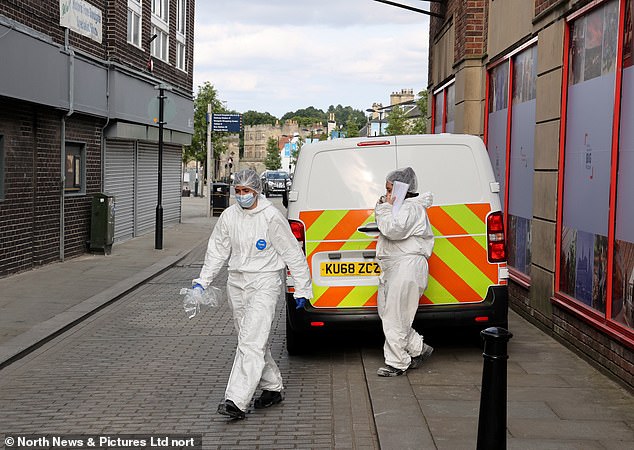
The gruesome discovery was made by contractors who were renovating a residential apartment in Fore Bondgate that had been empty for several years.
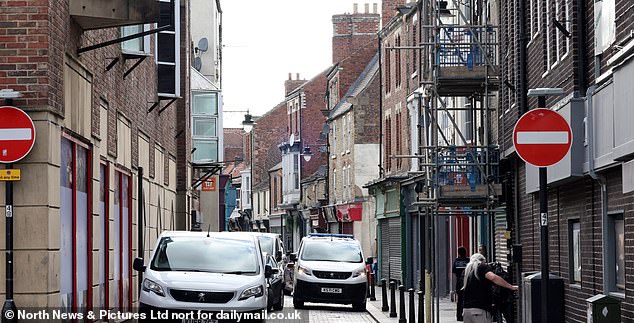
The baby’s skeleton was found on a property in Fore Bondgate
It seems likely that she was invited to the local wedding and is posing happily in the group photo.
Today the story of the baby with a string around his neck and the possible link to his ancestor has surprised family members.
Roz Fleming, 54, an optical consultant and great-niece, said: ‘It’s been a huge shock to hear about this but we’d all like to know the truth.
“At the moment, these are just rumours and we hope that the police can find out the truth and whether the baby is related to her. We will certainly cooperate with any police investigation if they need DNA or anything similar.”
Chief Inspector Mel Sutherland, from Durham Constabulary, who is leading the investigation, said the truth must be told. Police have made initial contact with the family but are awaiting scientific analysis before progressing the investigation.
“I hope to find out who the baby is related to, but I have little confidence in finding out how the baby died and how it was put there,” he said.
“My main goal is to identify who the baby is and find out what the family wants so that he can receive a dignified funeral. It’s a tragic story. At one point, he was a child who couldn’t defend himself or speak for himself, so it’s my job to do that.”
(tags to translate)dailymail

